White Rice is a powerful and versatile staple ingredient used by many cultures worldwide. It can be a simple side dish or a main dish component and with a quick cook time of 20 minutes, it's invaluable worldwide.
Jump To
Why this recipe works
- This is one of the easiest ways of cooking white rice and getting consistent results repeatedly.
- It gives you power! Why? Because knowledge is power. And knowing the basic recipe to cook rice gives you the power to master many other recipes.
- You will be eating in no time! This method does not take long to cook, and you will be pairing your rice with a protein or a vegetable and enjoying your meal in no time.
Ingredients
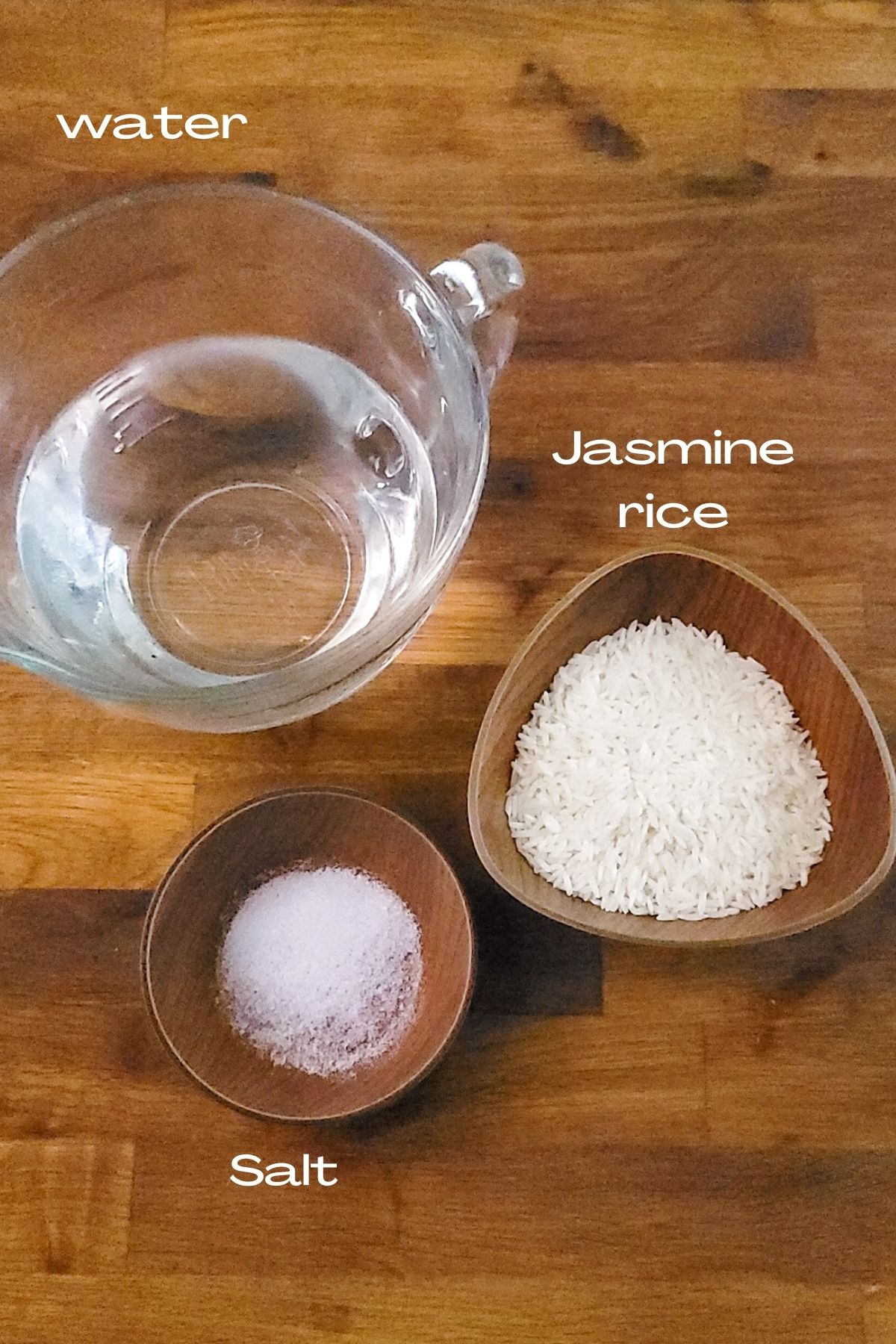
- Rice: I use Jasmine rice a lot. I also like Basmati. Jasmine rice has floral undertones, and Basmati is known for nutty undertones. These flavor undertones do not overpower the final product but add another layer of delicate flavor to your meals.
- Water: Normally, I push to add more flavor, and in my other recipes, you will see that I use broth instead of water. for this recipe, I used water only because I want to stress it is the basic recipe for making rice. This rice can be a savory side dish and a base for a great dessert.
- Salt: Just a pinch. Enough salt to open the grains to absorb water and enhance the natural flavor of the rice.
See recipe card for full information on ingredients and quantities.
The many ways to cook rice
Ask ten people how they cook rice, and many will give you methods for cooking rice very differently from each other, with a few who prefer to have someone else cook the rice because they always mess it up.
That was me for the longest time. I want to share with you some of the other methods I have tried, and I have reached success, but not as consistently as I have with my recipe today.
- Knuckle method: Pour your raw grain rice into a pot and level it off. That makes sure the rice is not taller on one side or the other. Place your finger inside the pot to touch the rice while pouring water into the pot. Stop pouring water once the water reaches the first crease of the finger's first joint. Bring to a boil for about five minutes, cover and reduce the heat to low, and cook for another 15 minutes. When I have to make rice for a crowd or at a restaurant, I follow this method, and instead of the stove, I use the oven. I will use a large rectangular pan for cooking the rice and covering it from the beginning.
- The 2:1 ratio: I have always used this method and have never been successful. I have played with my times, covering or not covering the rice, but I still cannot get it to work. The concept is to boil two cups of water and add a cup of rice. Cover and lower the heat to low for 20 minutes.
Step-by-step Instructions
One cup of uncooked rice serves two to three servings of cooked rice. The ratio I use is one and a quarter cups of water per cup of dry rice.
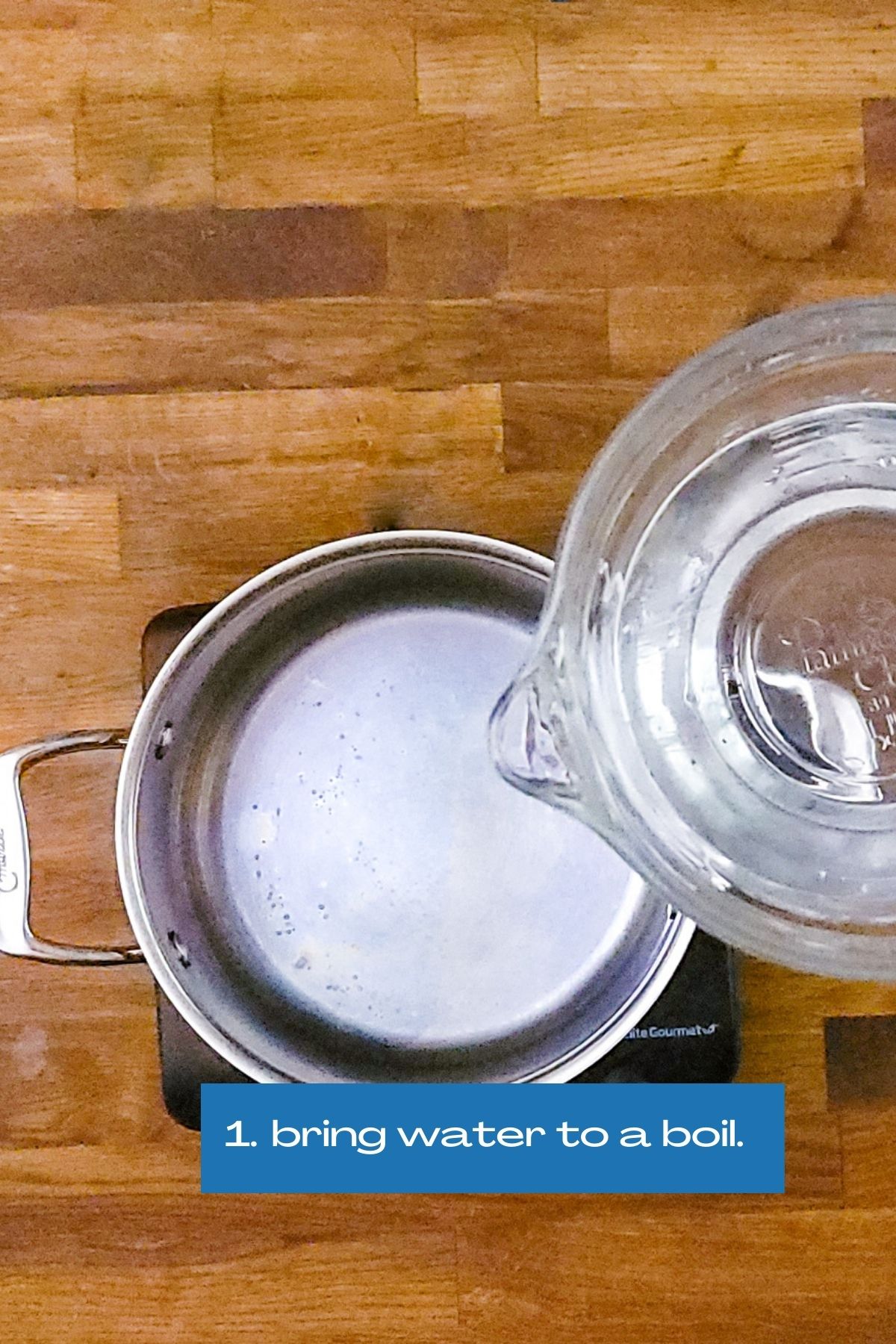
- Bring water to a boil.
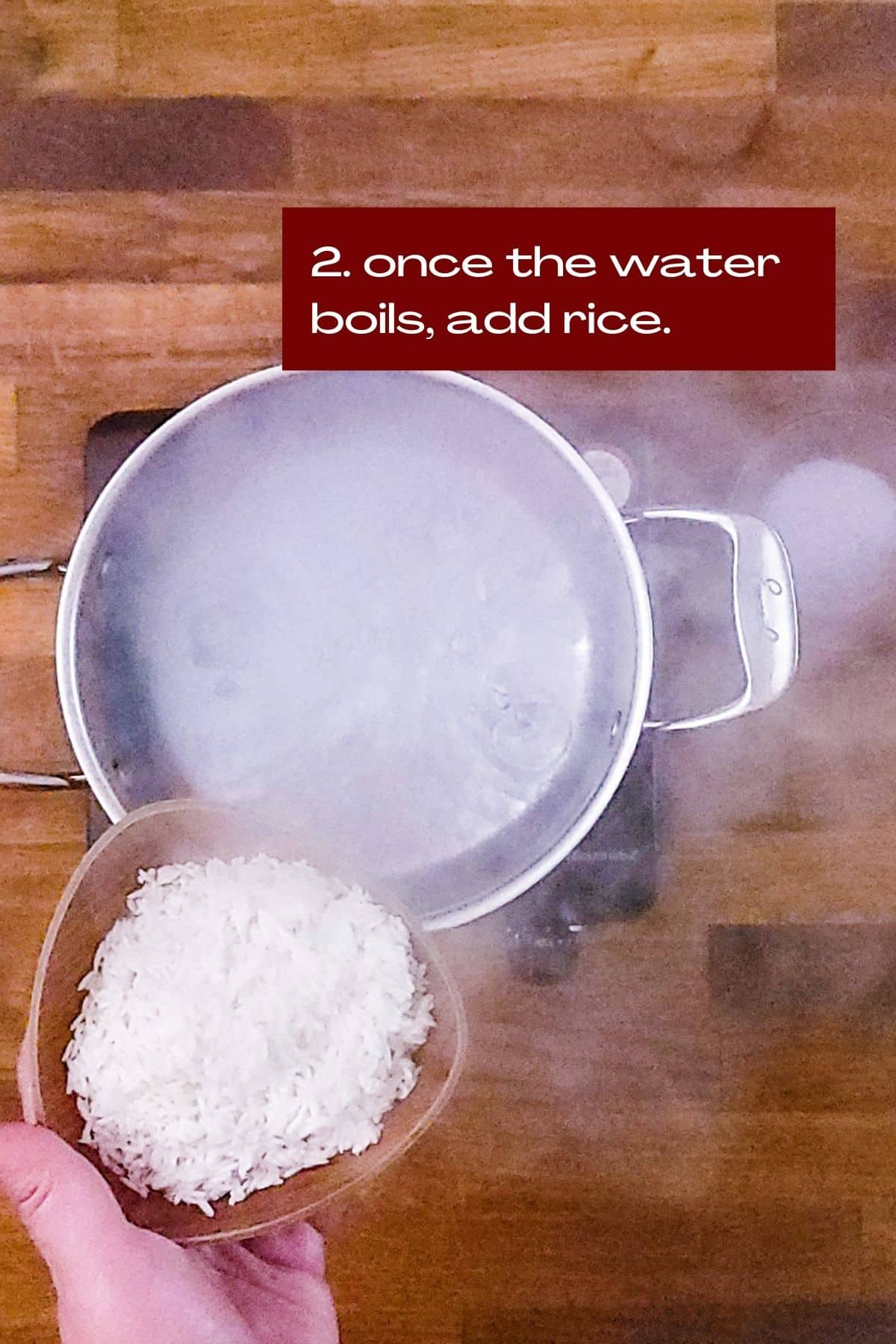
- Once the water boils, add rice.
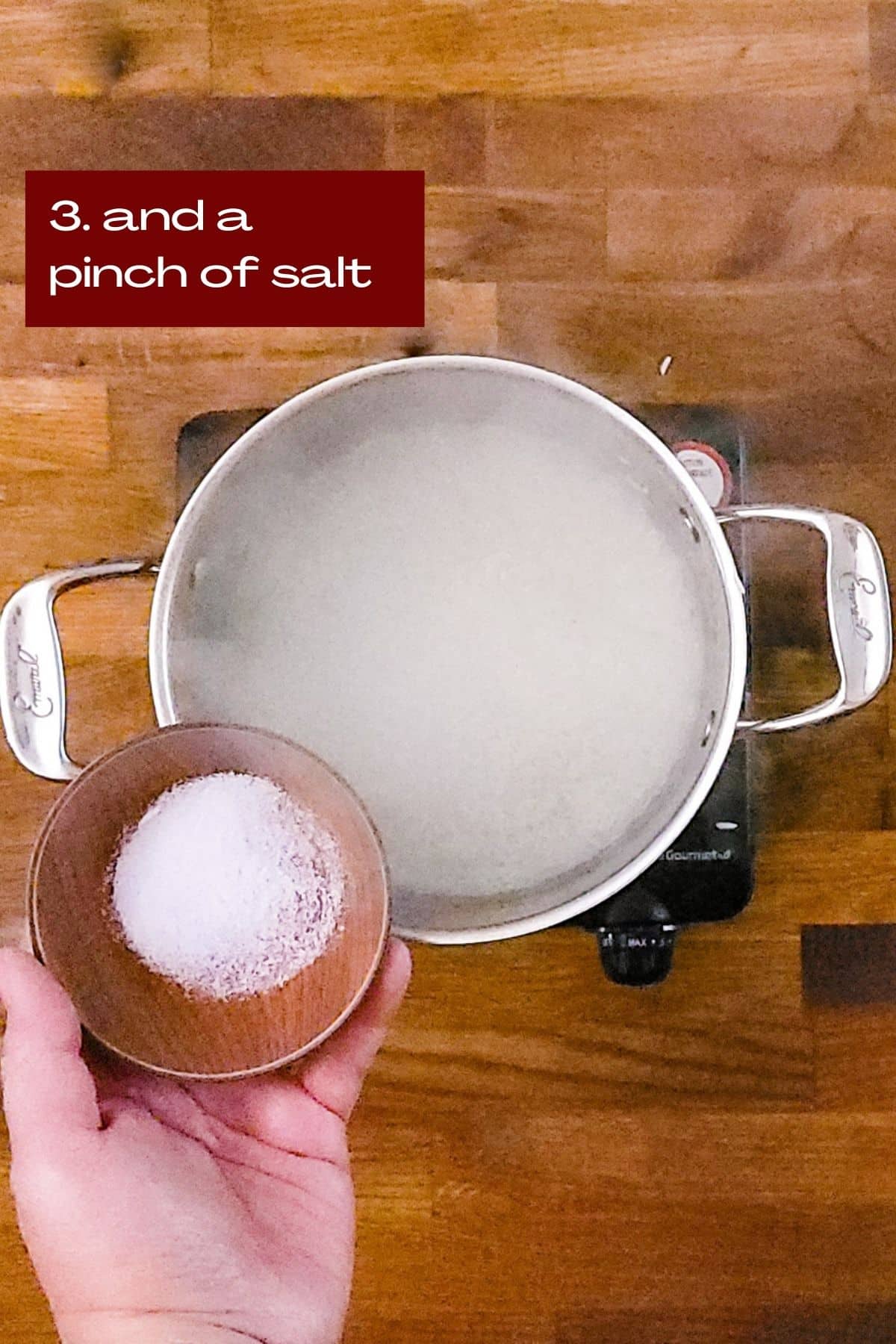
- Add a pinch of salt.
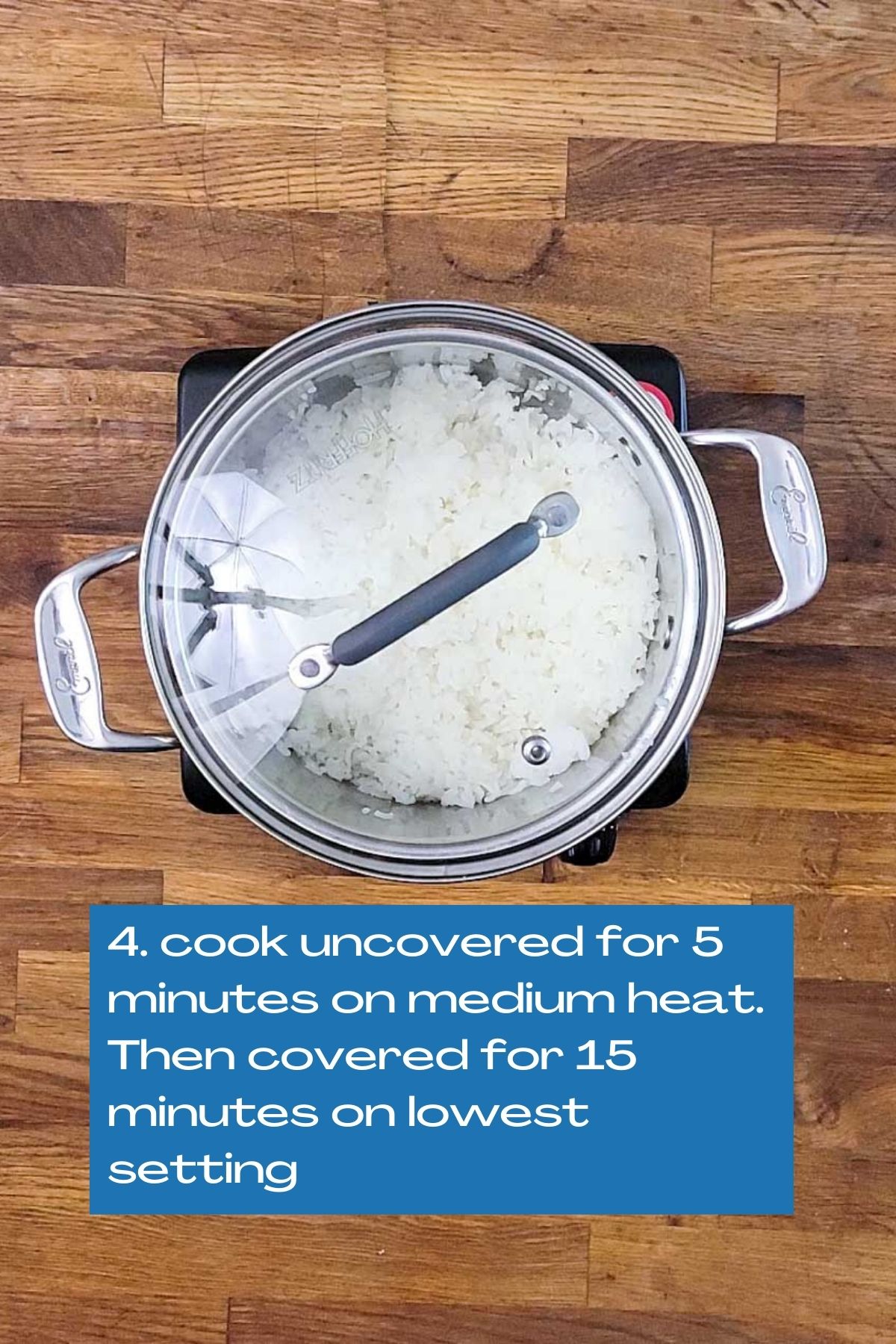
- Cook uncovered for 5 minutes on medium heat, then cover and cook on the lowest setting for another 15 minutes.
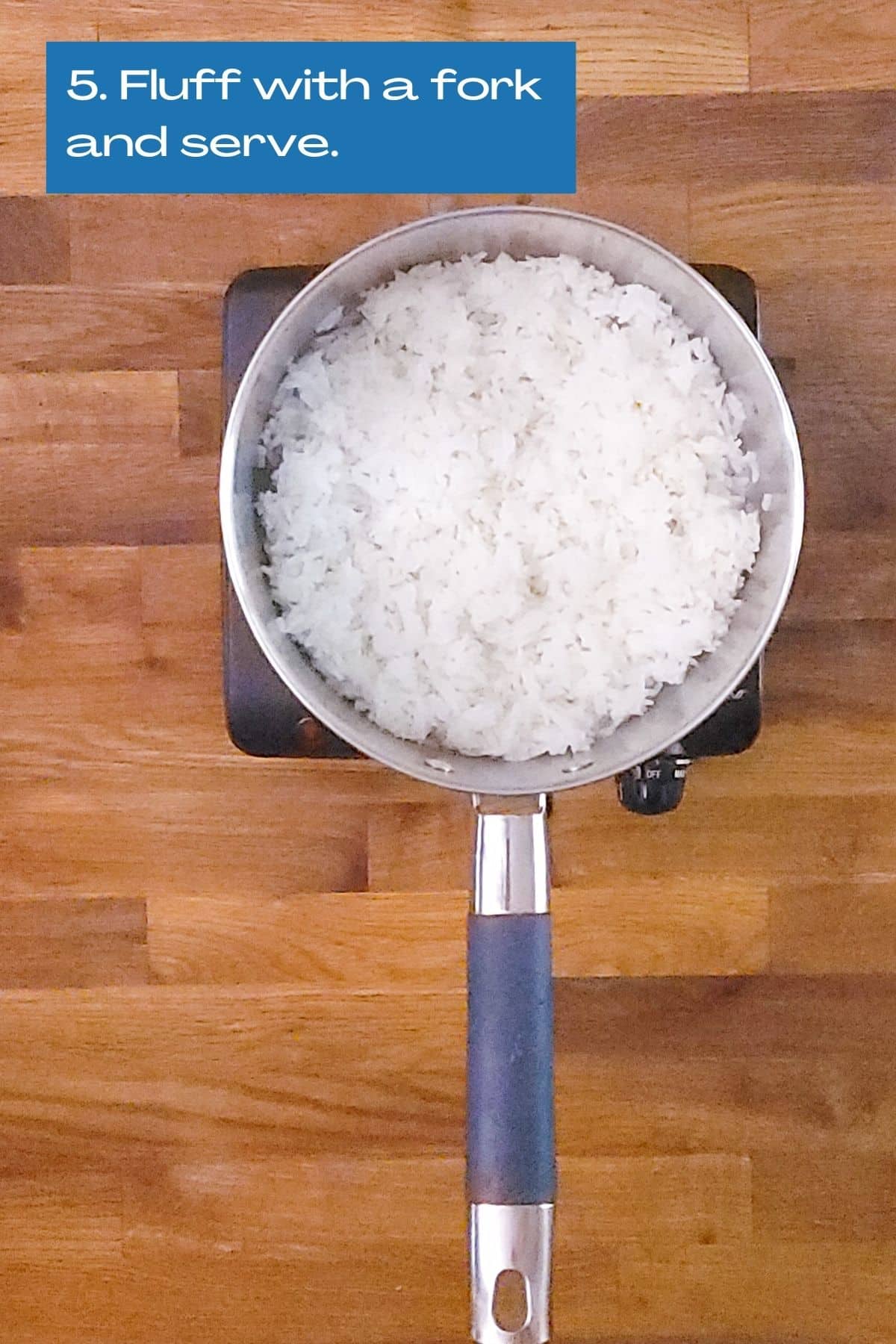
- Once the rice is cooked, fluff it with a fork and serve.
A few notes on cooking rice
- DO NOT TOUCH IT WHILE IT IS COOKING: I mean it. Maybe an initial toss to make sure all the grains are covered by the water and the salt is distributed, but other than that, do not turn the rice while it is cooking. I find that it makes it stickier. If the pot is covered, the steam and condensation drippings will cook the grains on the top of the pot. Trust me.
- I mentioned fluffing with a fork: Yes, you will use the spoon to serve the rice, but fluff the rice once the rice is cooked is best with a fork. The tines of the fork allow you to lift the grains without smashing or squashing them. Do a few turns with the fork in the pot, and then switch to the serving spoon to serve.
- Neutral seasoning allows for versatility: The seasoning for this recipe is relatively mild since we are only using a pinch of salt, which opens the leftover to endless possibilities, like:
- A dessert like rice pudding
- Quick fried rice, or
- Protein or vegetable-stuffed rice balls that could be pan-fried as an appetizer or snack.
Recipe FAQs
Short-grain rice tends to be starchier and cooks softer and fluffier, mostly used in sushi, casseroles like paella, and desserts like pudding. Long-grain rice tends to be less starchy and drier and gives a grainy texture when cooked.
I find that 1.25 (one and a quarter) cups of water per cup of rice works best for me. I have used a 1:1 ratio before, and that has also worked, but not as consistently as 1.25:1.
Yes.
I think this is a matter of preference. When my mom was teaching me to cook, she taught me to wash the rice. At the restaurants, we never really washed the rice, and the rice came out fine. The concept behind it is to remove any impurities that might come from the processing of the grains, like pebbles, faulty grains, and excess starch. In recent years most rice is coming relatively clean, so I do not wash my rice all the time. I do, however, pick through my rice to eliminate any grains that might seem harder than the rest, ensuring there are no small pebbles or foreign particles.
Other related rice recipes...
Love this recipe? Please leave a 5-star 🌟🌟🌟🌟🌟rating in the recipe card below & a review in the comments section further down the page.
📖 Recipe
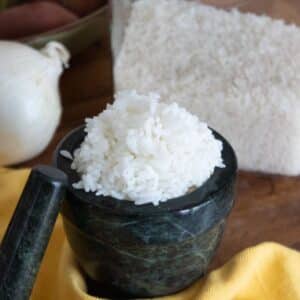
White Rice
Ingredients
- 2 cups rice I use Jasmine but our favorite type or size will work as well.
- 2½ cups water
- 1 pinch salt
Instructions
- Bring water to a boil
- Once the water boils, add rice.
- Add a pinch of salt.
- Cook uncovered for 5 minutes on medium heat, then cover and cook on the lowest setting for another 15 minutes.
- Once the rice is cooked, fluff it with a fork and serve.
Notes
- DO NOT TOUCH IT WHILE IT IS COOKING: I mean it. Maybe an initial toss to make sure all the grains are covered by the water and the salt is distributed, but other than that, do not turn the rice while it is cooking. I find that it makes it stickier. If the pot is covered, the steam and condensation drippings will cook the grains on the top of the pot. Trust me.
- I mentioned fluffing with a fork: Yes, you will use the spoon to serve the rice, but fluff the rice once the rice is cooked is best with a fork. The tines of the fork allow you to lift the grains without smashing or squashing them. Do a few turns with the fork in the pot, and then switch to the serving spoon to serve
- Neutral seasoning allows for versatility: The seasoning for this recipe is relatively mild since we are only using a pinch of salt, which opens the leftover to endless possibilities, like:
-
- A dessert like rice pudding
-
- Quick fried rice, or
-
- Protein or vegetable-stuffed rice balls that could be pan-fried as an appetizer or snack.
-
- What is the ratio of water to rice? I find that 1.25 (one and a quarter) cups of water per cup of rice works best for me. I have used a 1:1 ratio before, and that has also worked, but not as consistently as 1.25:1
- Do you have to wash rice before cooking? I think this is a matter of preference. When my mom was teaching me to cook, she taught me to wash the rice. At the restaurants, we never really washed the rice, and the rice came out fine. The concept behind it is to remove any impurities that might come from the processing of the grains, like pebbles, faulty grains, and excess starch. In recent years most rice is coming relatively clean, so I do not wash my rice all the time. I do, however, pick through my rice to eliminate any grains that might seem harder than the rest, ensuring there are no small pebbles or foreign particles.

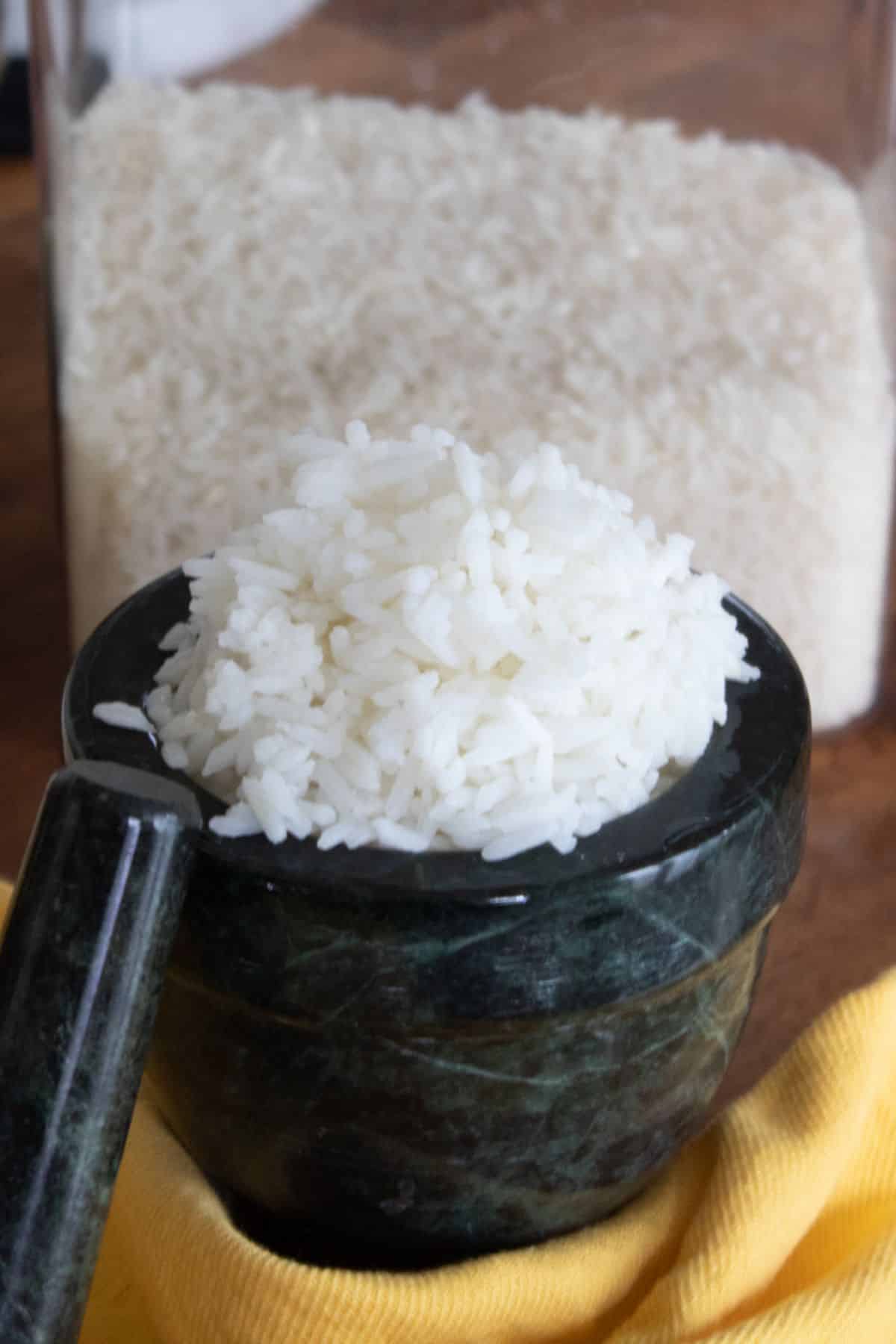
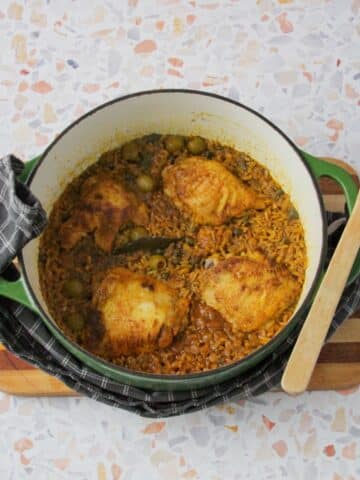
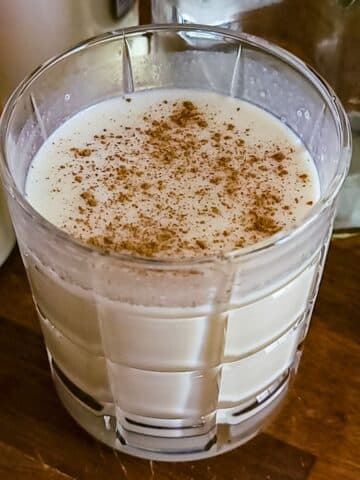

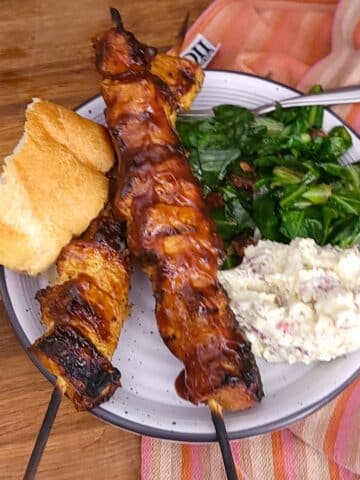
Comments
No Comments